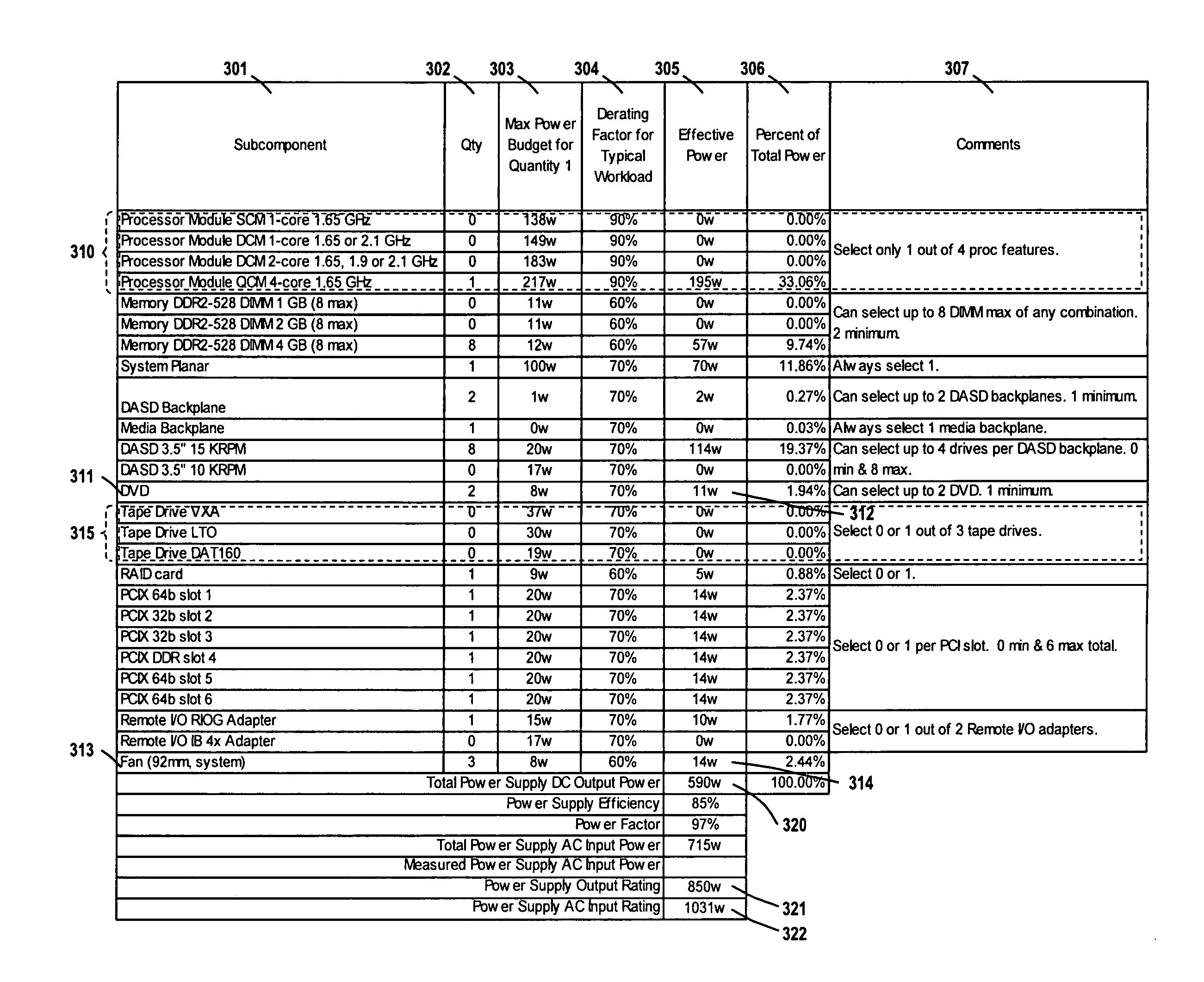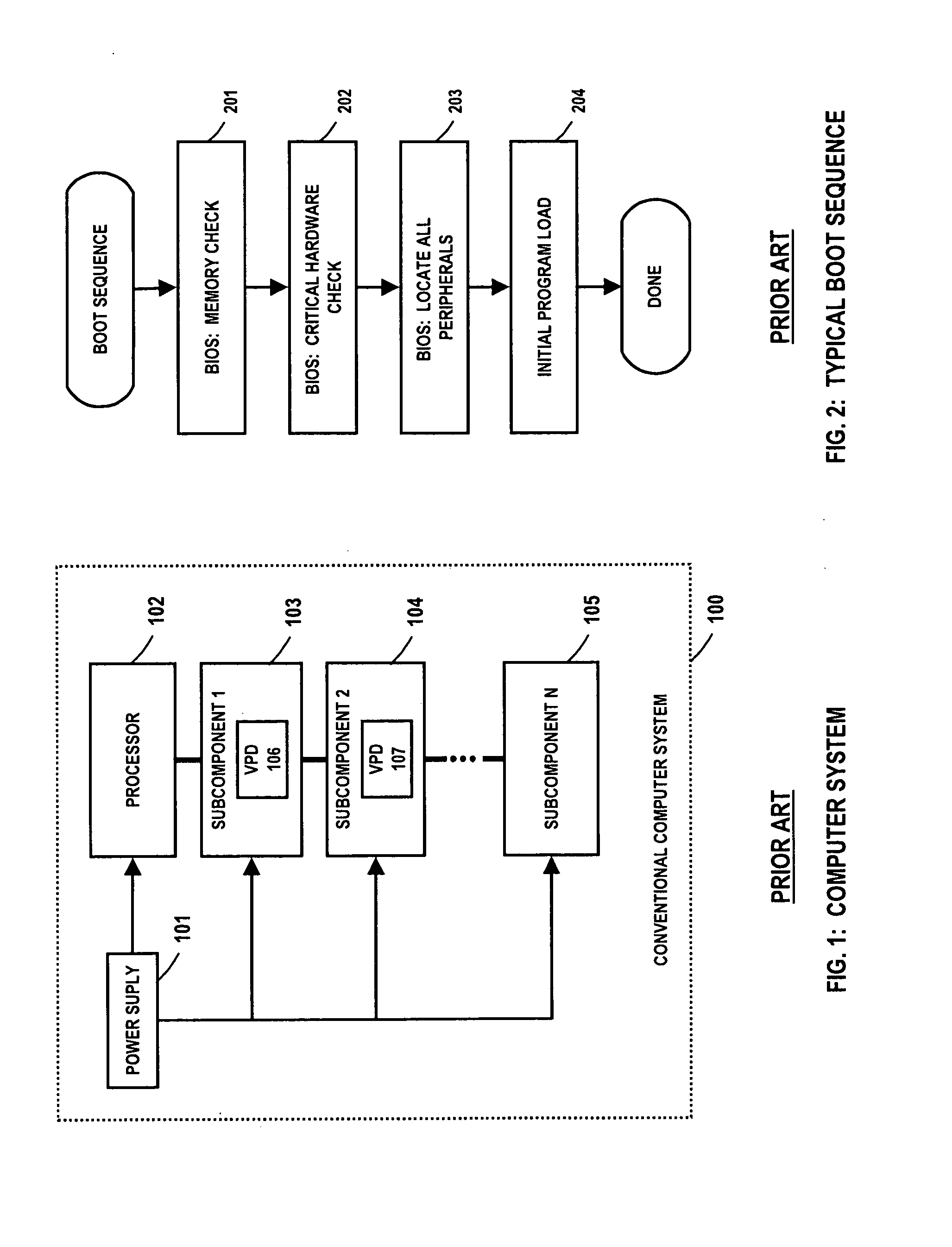Method for estimating total power requirement in a computer system
a computer system and total power technology, applied in the field of computer systems, can solve the problems of difficult for users to determine the total power requirement, the product is dynamic, and the installer is extremely difficult to install
- Summary
- Abstract
- Description
- Claims
- Application Information
AI Technical Summary
Benefits of technology
Problems solved by technology
Method used
Image
Examples
Embodiment Construction
[0014]The conventional computer system illustrated in FIG. 1, when started from power off, typically follows a firmware “boot sequence” as shown in FIG. 2, including a BIOS portion of code during which time the computer's processor performs various diagnostic routines 201, 202 to check proper operation of other subcomponents. The processor also queries the subcomponents 203 to determine which ones are present and may query jumper settings (not shown) or VPD memories 106, 107, if they are present in the subcomponent, to determine operating parameters. The processor then begins to load the main operating system from the hard drive 204 during the initial program load (IPL) portion of code.
[0015]In an exemplary embodiment of the present invention, the VPD for each subcomponent is expanded to include information pertaining to the subcomponent's power requirements under each possible operating mode. For example, the stored information may include the maximum power used by the subcomponent...
PUM
 Login to View More
Login to View More Abstract
Description
Claims
Application Information
 Login to View More
Login to View More - R&D
- Intellectual Property
- Life Sciences
- Materials
- Tech Scout
- Unparalleled Data Quality
- Higher Quality Content
- 60% Fewer Hallucinations
Browse by: Latest US Patents, China's latest patents, Technical Efficacy Thesaurus, Application Domain, Technology Topic, Popular Technical Reports.
© 2025 PatSnap. All rights reserved.Legal|Privacy policy|Modern Slavery Act Transparency Statement|Sitemap|About US| Contact US: help@patsnap.com



